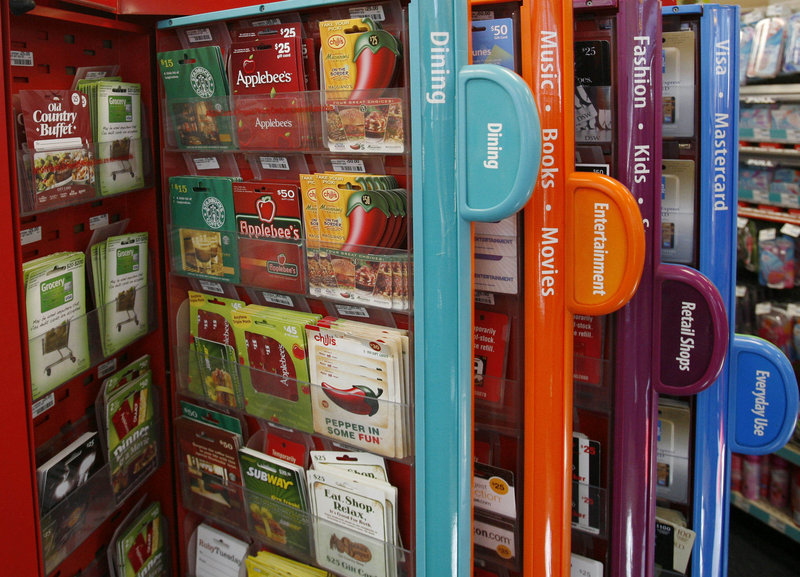NEW YORK – New federal rules for gift cards mean you have longer to use them and don’t face as many costs up front. But many problems remain.
For starters, the rules that went into effect last month don’t cover all gift cards. And the Americans who spend tens of billions of dollars each year on the cards — $23.6 billion last November and December alone — still have to pay fees for not using them, and those fees aren’t capped.
Here’s what you need to know:
DEADLINES
The rules put more time on your side. You now have at least five years to spend your balance on most cards; many used to be good for only one year.
But a key improvement — card issuers must now wait a year before charging an inactivity fee — could lead issuers to charge higher fees later to make up the difference, said Laura Lane, vice president for unclaimed property services at The Keane Organization Inc., which advises companies on risk management.
“It could be good for consumers in that they have a year before fees are charged,” she said. “However, once that year is up, who knows how good for consumers that will be.”
FEES
There’s no limit on the monthly fee issuers can charge after the first year, and Lane says it’s likely they’ll charge as much as shoppers tolerate — perhaps $5 a month. Issuers are still allowed to charge a fee when you buy a card, and a fee to replace it if it’s lost or stolen.
LOSS
More time means more chances to lose gift cards in wallets, household junk drawers and wherever gift cards go.
The National Retail Federation recommends spending gift cards as soon as you can and registering them whenever that’s possible. Some retailers, including Starbucks, let you keep your balance if you lose a registered card. Also, if you’re giving a card, include the gift receipt in case of problems.
LOOPHOLES
Not all gift cards are treated equally, so learn the differences.
The new rules don’t necessarily cover reloadable prepaid cards when they carry logos for MasterCard, Visa, American Express and other lenders. When those cards are used like debit cards and reloaded by, say, an employer, they are not covered. But if shoppers buy them at malls, for example, they are covered.
Also not covered: government-issued cards for food stamps, for example, and rebates or refunds disguised as gift cards. Reward cards — such as a $5 gift card you may receive for buying a certain amount of merchandise or a $50 rebate back for signing a cell phone contract — can still expire much sooner than the five-year minimum on other cards.
Lane says more companies are giving rebates through these electronic cards, so watch out for them.
FINE PRINT
While card issuers soon must print expiration dates, inactivity fees and other restrictions on their cards, that rule doesn’t take effect until Jan. 31. That means it’s more important than ever to know the rules during the holiday season.
Copy the Story Link
Send questions/comments to the editors.



Success. Please wait for the page to reload. If the page does not reload within 5 seconds, please refresh the page.
Enter your email and password to access comments.
Hi, to comment on stories you must . This profile is in addition to your subscription and website login.
Already have a commenting profile? .
Invalid username/password.
Please check your email to confirm and complete your registration.
Only subscribers are eligible to post comments. Please subscribe or login first for digital access. Here’s why.
Use the form below to reset your password. When you've submitted your account email, we will send an email with a reset code.